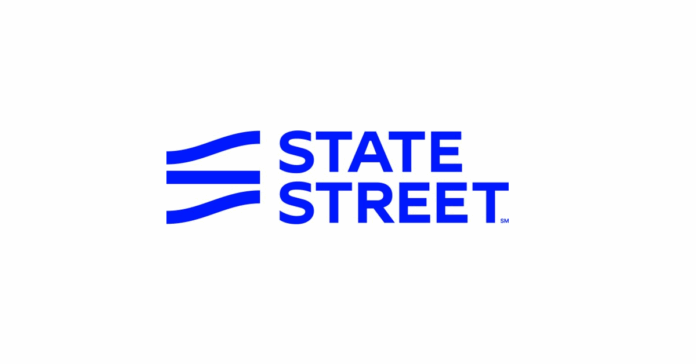BOSTON, MA – State Street Corporation (STT), a prominent global custodian bank, is capturing the attention of value investors due to its recent closing price of $110.31 as of July 5, 2025. The institution, a cornerstone of the financial services industry, specializes in asset servicing, investment management, and data analytics for institutional clients. This analysis delves into STT’s financial performance, calculates its intrinsic value, and assesses its viability as an investment.
State Street, headquartered in Boston, Massachusetts, stands as one of the world’s largest custodian banks, overseeing more than $40 trillion in assets under custody and administration as of Q1 2025. Its primary operations encompass custody services, fund accounting, securities lending, and investment management through State Street Global Advisors, known for managing SPDR ETFs. Unlike conventional banks that concentrate on retail lending, STT’s business model is largely fee-based, which reduces its exposure to credit risk but makes it susceptible to market fluctuations and client asset growth. This distinct operational model necessitates a specialized valuation approach, such as the Buffett-Inspired and McGrew Valuation Methods, which utilize Distributable Earnings instead of Free Cash Flow (FCF) for financial institutions.
Financial Performance: A Closer Look
STT’s financial performance for the trailing twelve months (TTM) ending March 31, 2025, indicates stability and growth. The company reported TTM net income of $2.868 billion, a notable increase from $2.358 billion in the prior year. This improvement was bolstered by a strong Q1 2025 performance, with net income reaching $644 million, a 39.1% increase from Q1 2024’s $463 million. Diluted EPS for the TTM stood at $8.88, reflecting a 48.9% rise from $1.37 in Q1 2024 to $2.04 in Q1 2025, partly due to share repurchases that reduced diluted average shares from 305.9 million to 292.7 million.
To evaluate efficiency, STT’s TTM Return on Equity (ROE) and Return on Tangible Assets (ROTA) were calculated:
- ROE: Utilizing a TTM net income of $2.868 billion and an average common stock equity of $22.737 billion (averaged from Q1 2025 to Q2 2024), the ROE is 12.61%. While this is considered solid for a custodian bank and indicates efficient use of shareholder capital, it trails behind leading commercial banks like JPMorgan, which often surpass 15%.
- ROTA: With a TTM net income of $2.868 billion and average net tangible assets of $16.765 billion, the ROTA is an impressive 17.11%. This figure underscores STT’s capability to generate substantial profits relative to its tangible asset base, a characteristic common for asset-light custodian banks.
Revenue and Growth
STT’s TTM total revenue reached $13.065 billion, marking a 4.7% increase from $3.138 billion in Q1 2024 to $3.284 billion in Q1 2025. This growth was primarily fueled by fee-based income from custody and investment management services, which constitute the majority of revenue, supplemented by net interest income of $2.921 billion. However, net interest income remained flat at $714 million in Q1 2025 compared to $716 million in Q1 2024, indicating pressure from high interest rates increasing deposit costs, with interest expense reaching $1.566 billion in Q1 2025.
The 3-5 year Compound Annual Growth Rate (CAGR) for Distributable Earnings, calculated as Net Income plus Depreciation, was 8.98% from Q1 2021 ($519 million net income) to Q1 2025 ($732 million). This growth rate, falling below the 10% threshold, categorizes STT as a non-growth stock, suggesting stable but not aggressive expansion when compared to high-growth financial technology firms such as Intuit, which reported a 15% revenue growth in its latest quarter.
Financial Health
STT’s balance sheet demonstrates robust financial health. Total assets saw a 10.3% year-over-year increase, reaching $372.693 billion in Q1 2025, driven by a rise in client deposits and investments. Cash and cash equivalents totaled $124.122 billion, representing 33.3% of total assets, ensuring strong liquidity. Total debt increased to $36.695 billion from $31.287 billion in Q1 2024, resulting in a debt-to-equity ratio of 1.37. This moderate leverage is characteristic of financial institutions. Common stock equity rose to $23.133 billion, and tangible book value increased to $14.324 billion, signaling a strengthening capital base. Operating cash flow for Q1 2025 significantly improved to $2.396 billion from a negative $844 million in Q1 2024, reflecting enhanced working capital management.
Valuation Analysis
To determine if STT is undervalued at its $110.31 closing price, the Buffett-Inspired Valuation Method and McGrew Valuation Method were applied, both tailored for financial services companies and utilizing Distributable Earnings. Distributable Earnings are calculated as Net Income + Non-Cash Charges (Depreciation) – Increase in Regulatory Capital. Due to the unavailability of explicit regulatory capital data, Distributable Earnings were approximated as:
- Q1 2025: $644M (Net Income) + $88M (Depreciation) = $732M
- TTM: $2,868M (Net Income) + $512M (Depreciation) = $3,380M
- Annualized Q1 2025: $732M * 4 = $2,928M
Given STT’s classification as a non-growth stock with an 8.98% CAGR, both valuation methods employ a 3% constant growth rate for Years 1-10 and a 2.5% perpetual growth rate. Net Debt, calculated as total debt ($36.695 billion) minus cash and cash equivalents ($124.122 billion), resulted in a negative net debt of -$87.427 billion, which was floored at $0 as per the model’s guidelines. It’s important to note a limitation: the absence of explicit Restricted Cash data (client funds) may inflate the reported available cash, as custodian banks hold substantial client-related assets balanced by liabilities.
Buffett-Inspired Valuation Method
Using annualized Distributable Earnings of $2,928 million, a 3% growth rate, an 8% discount rate, and 288,676,229 shares outstanding:
- Year 1-10 Projections: Earnings are projected to grow from $3,015.84 million in Year 1 to $3,934.99 million in Year 10.
- Terminal Value: The terminal value is calculated as $73,322.95 million.
- Present Value: Discounted cash flows sum to $56,830.75 million.
- Equity Value: $56,830.75 million – $0 (Adjusted Net Debt) = $56,830.75 million.
- Intrinsic Value per Share: $196.85
- Price with 25% Margin of Safety: $147.64
McGrew Valuation Method
As STT is considered a non-growth stock, the McGrew method yields identical results:
- Intrinsic Value per Share: $196.85
- Price with 25% Margin of Safety: $147.64
Valuation Status
With a closing price of $110.31, STT is currently trading 44% below its intrinsic value of $196.85, classifying it as a “Screaming Buy” according to both valuation methods.
Investment Thesis
Strengths:
- Strong Profitability: TTM ROE of 12.61% and ROTA of 17.11% demonstrate efficient capital utilization and high returns on tangible assets.
- Undervalued Stock: The intrinsic value of $196.85 suggests a significant 78.5% upside potential, further enhanced by a 2.5% dividend yield ($2.76 annualized).
- Robust Balance Sheet: A substantial $124.122 billion in cash and a growing tangible book value of $14.324 billion provide financial stability.
- Market Leadership: STT’s dominant position in custody services ensures stable fee-based revenue.
Risks:
- Modest Growth: The 8.98% CAGR and 4.7% revenue growth lag behind high-growth peers, potentially limiting upside.
- Interest Rate Pressure: Flat net interest income and high interest expenses ($2.208 billion in Q1 2025) could compress margins if interest rates remain elevated.
- Regulatory Constraints: As a custodian bank, STT is subject to stringent capital requirements, data for which was not quantifiable in the provided analysis, potentially impacting Distributable Earnings.
- Valuation Limitation: The absence of Restricted Cash data might overstate available cash, potentially inflating the intrinsic value calculation.
Recommendation
At its current price of $110.31, State Street Corporation is considered a “Screaming Buy,” trading significantly below its estimated intrinsic value of $196.85. The stock’s low P/E (12.42), P/B (1.38), and PEG (0.956) ratios, when compared to financial sector averages (P/E 15-20, P/B 1.5-2.0), further underscore its undervaluation. The appealing 2.5% dividend yield adds to its attractiveness for income-focused investors, while its strong liquidity and capital position mitigate downside risks. Investors are advised to monitor interest rate trends and regulatory developments, as these could affect margins and capital requirements. For value investors seeking a margin of safety, STT presents a compelling opportunity in the financial services sector.
Conclusion
State Street Corporation’s strong fundamentals, undervalued stock price, and leadership in custody services position it as an attractive investment at $110.31. Both the Buffett-Inspired and McGrew Valuation Methods confirm substantial upside potential, with a conservative intrinsic value estimate of $196.85. While acknowledging limitations in available Restricted Cash and regulatory capital data, STT’s robust ROE, ROTA, and liquidity make it a standout value play. Investors prioritizing value and income in the financial sector should consider adding STT to their portfolios. It is important to remember that for financial services firms like STT, Distributable Earnings are used in valuation to reflect their unique cash flow dynamics, rather than Free Cash Flow (FCF) which is typically used for non-financial services companies.

